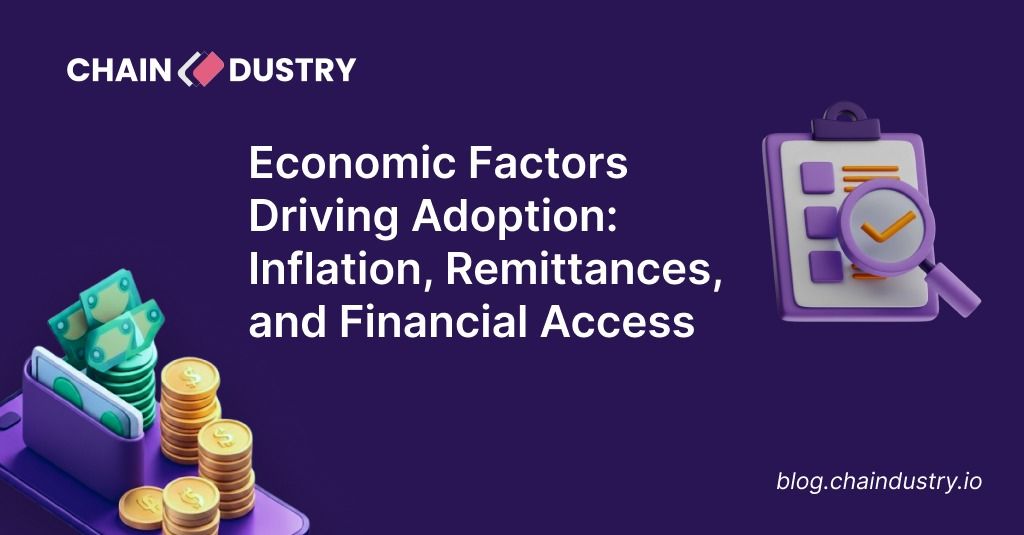Introduction
In 2025, Latin America has emerged as one of the most dynamic crypto regions in the world. From Argentina to Brazil, millions of people are turning to digital assets as a solution to inflation, unstable banking systems, and limited access to global finance. This isn’t just about speculation anymore — it’s about survival and opportunity. Crypto is becoming part of everyday life: used for remittances, online business, savings, and even payroll. Let’s explore how different Latin American countries are leading this movement and what’s driving their rapid adoption.
Why Crypto Is Thriving in Latin America
Latin America has a perfect storm of factors that make crypto adoption not only appealing but necessary. • High inflation and currency devaluation: Currencies like the Argentine peso and Venezuelan bolívar have lost much of their value, pushing people toward stablecoins like USDT and USDC for everyday savings. • Remittance dependence: Families rely heavily on international transfers, and crypto remittances offer faster, cheaper alternatives to Western Union or banks. • Low banking access: Nearly 50% of adults in some countries remain unbanked, yet most have mobile phones, opening the door for digital wallets. • Government experimentation: Nations like El Salvador and Brazil are openly integrating crypto and blockchain into their financial systems. These pressures and opportunities have made the region a living case study in crypto’s real-world utility.
1. El Salvador: Bitcoin as Legal Tender
El Salvador remains the global symbol of crypto nationhood. In 2021, it became the first country to make Bitcoin legal tender, and four years later, the experiment continues to evolve. By 2025, over 70% of El Salvador’s population has used Bitcoin at least once mostly via the Chivo Wallet, the government-backed app. The country now attracts crypto tourism, Bitcoin-backed investment funds, and education programs teaching blockchain basics in schools. While the rollout faced early challenges (technical issues, volatility concerns), it positioned El Salvador as the pioneer of sovereign crypto integration.
2. Argentina: Stablecoins to the Rescue
Argentina’s inflation surpassed 140% in 2025, making the peso nearly unusable for savings. As a result, Argentines have turned massively to stablecoins (especially USDT and USDC) as digital dollars to store value and make payments. Apps like Lemon Cash, Ripio, and Buenbit have become household names, offering users instant conversions between pesos and stablecoins. Even small businesses now prefer to price goods in USDT equivalents. For many, crypto isn’t an investment; it’s their economic lifeline.
3. Brazil: Building the Web3 Infrastructure
Brazil has become Latin America’s regulatory and innovation leader in 2025. The country passed comprehensive crypto legislation in 2023 that recognized Bitcoin and digital assets under financial law, creating clear rules for exchanges and investors. Major banks like Itaú Unibanco and BTG Pactual now offer crypto trading directly through banking apps. Meanwhile, the Brazilian Central Bank is developing a CBDC (Central Bank Digital Currency) known as the Digital Real, aimed at complementing (not competing with) crypto. Brazil’s approach shows how crypto can coexist with regulation rather than fight it.
4. Mexico: Remittance Revolution
Mexico is the second-largest remittance market in the world, after India. Every year, billions of dollars flow in from Mexican workers abroad. Now, crypto platforms like Bitso and Coinbase Remittance are cutting fees and transfer times dramatically. What once took three days and 8% in costs now happens instantly for less than 1%. Crypto’s impact on remittances is deeply personal — it allows families to receive more of what their loved ones send, faster than ever.

Economic Factors Driving Adoption — Inflation, Remittances, and Financial Access
Latin America’s crypto boom can be traced to three overlapping economic realities: 1. Inflation: Persistent inflation erodes local currency value, making stablecoins a preferred hedge. In Argentina, a $100 bill today might lose 20% of its value in a month — but $100 in USDT holds steady. 2. Remittances: Cross-border workers rely on crypto transfers to avoid high remittance fees. Platforms like Bitso and Stellar are integrating directly with payment networks to simplify conversions between fiat and crypto. 3. Financial Inclusion: Crypto wallets are giving the unbanked population access to digital savings, lending, and online business tools. In regions where banks are absent, crypto acts as a mobile bank, 24/7 and borderless. Together, these factors make crypto less of a luxury and more of a necessity for millions of Latin Americans.
The Regional Outlook: A Model for Emerging Markets
Latin America’s story is a preview of what’s likely to happen across Africa and Southeast Asia next. The same problems (inflation, poor banking systems, and reliance on remittances) are driving innovation worldwide. In 2025, regional governments are also experimenting with blockchain for identity management, public records, and digital payments, signaling a long-term integration into public systems. With rising developer activity, investor interest, and grassroots adoption, Latin America is quietly shaping the blueprint for real-world crypto economies.
Conclusion
Latin America isn’t waiting for permission, it’s building the future of finance out of necessity. From El Salvador’s national Bitcoin push to Argentina’s stablecoin culture and Brazil’s regulated crypto banks, the region shows how crypto adapts to local needs. For anyone watching global adoption trends, one thing is clear: crypto’s next wave of growth is not coming from Wall Street, it’s coming from Latin America.
